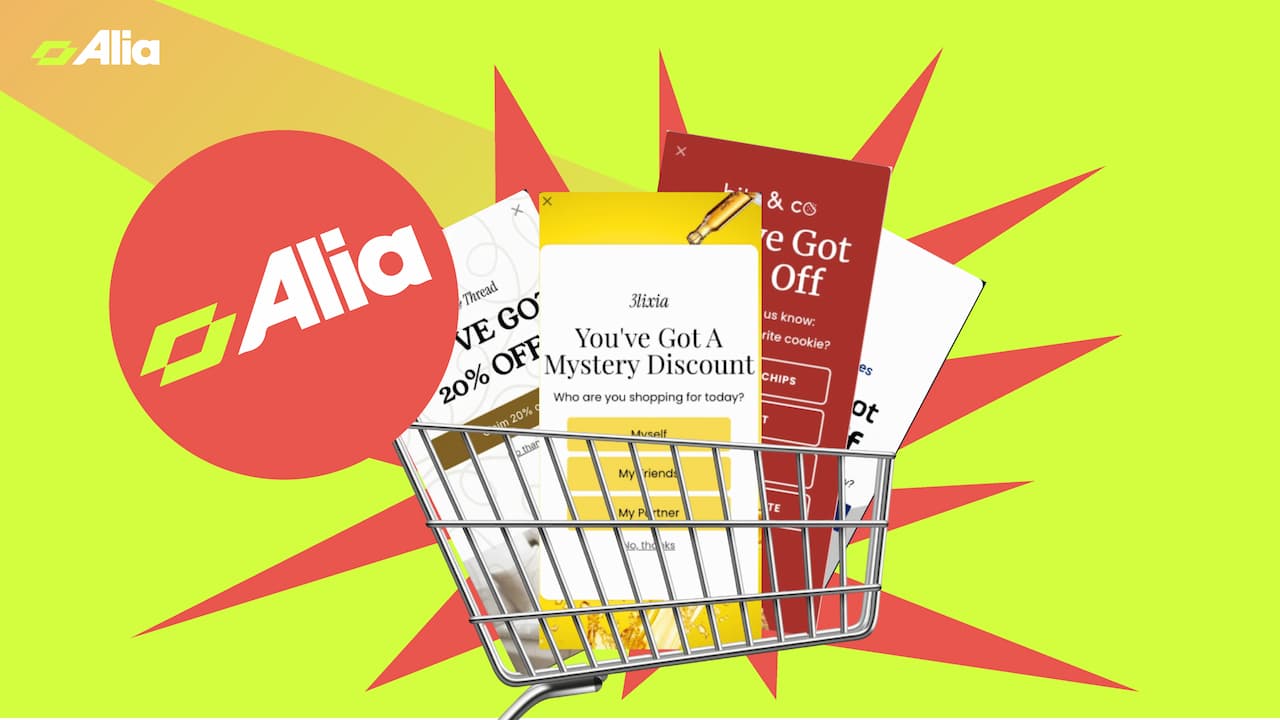When someone signs up for your email list, they’re showing interest in your brand—but interest doesn’t always translate into action. This is especially true if your store offers multiple products or variations. Instead of excitement, customers may feel overwhelmed: Which product is right for me? Do I really need this now? What if I choose the wrong one?
The welcome flow is your chance to introduce your brand and begin nurturing subscribers toward their first purchase. By the time they reach the end of your welcome series, they should have absolute clarity on why your brand is the best — and ideally the only — choice in your market whenever they need the type of product you sell. It’s not just about awareness; it’s about building trust, creating emotional connection, and positioning your brand as the obvious go-to.
Why Decision-Making Matters in Ecommerce
Too many options can paralyze customers. Psychologists call it “choice overload.” When shoppers are unsure of what to buy, the easiest decision is to make no decision at all—meaning they leave your site without purchasing.
Your welcome flow emails can solve this problem by:
- Setting expectations for what type of emails they’ll receive
- Clarifying choices so customers don’t feel lost
- Highlighting the right product for the right person
- Reducing buyer’s remorse by showing why their decision is smart
- Building confidence and trust so they feel supported, not sold to
The better you guide customers through their decision-making process, the higher your conversions, average order values, and long-term loyalty. According to Klaviyo’s 2025 email benchmarks report, a typical email welcome series sees an average open rate of 51%, and top-performing welcome emails see up to 15% click rates and 10% placed order rates.
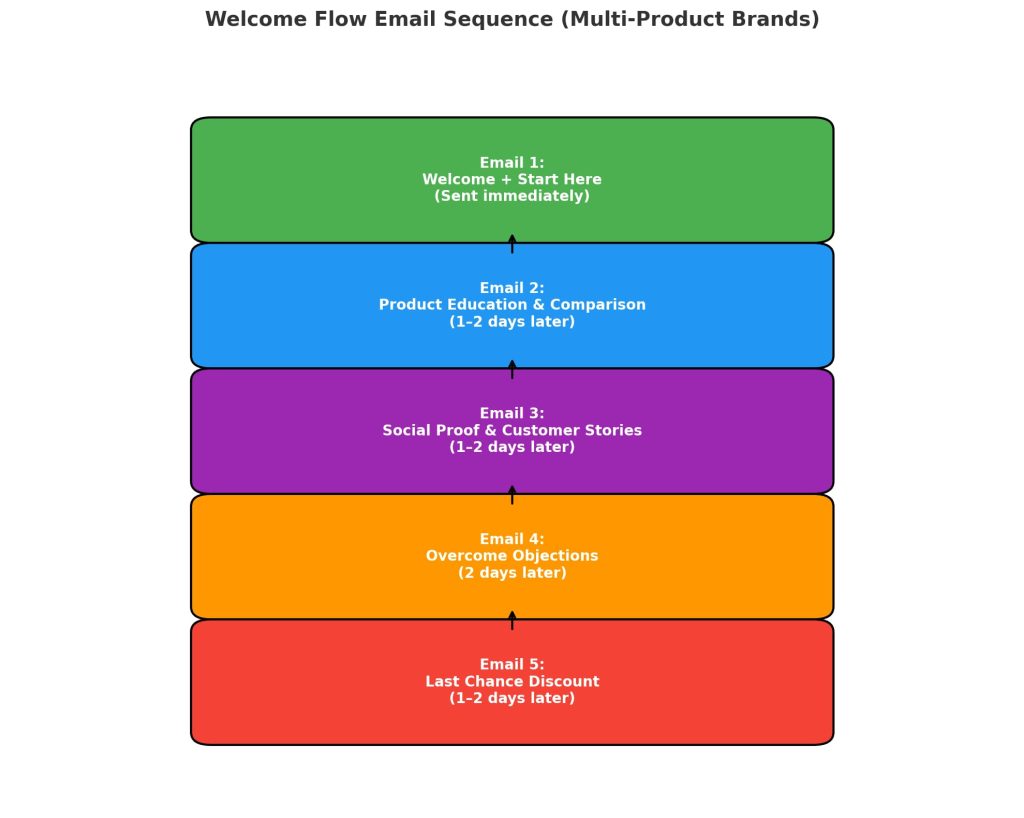
What a Decision-Support Welcome Flow Should Include
1. A Clear Brand Introduction
The first email should welcome subscribers, explain who you are, and set the stage for what is to come. But more than that, it should frame your brand around solving their problems. By making your value proposition and mission clear from the beginning, you position yourself as the solution they’ve been searching for.
2. Guided Product Recommendations
Instead of showing every product in your catalog, focus on a curated selection. Use segmentation data (such as browsing behavior or quiz results) to recommend products tailored to their interests. A “Start Here” email that explains your bestsellers or most-loved options makes the buying path clearer.
3. Education and Comparison
If your products require explanation (e.g., skincare, supplements, or high-ticket items), dedicate an email to education. This can include:
- Side-by-side comparisons
- Explainer videos or infographics
- “Which product is right for you?” guides
By simplifying complexity, you help customers see which option fits them best.
4. Social Proof and Stories
Nothing reassures a hesitant shopper like seeing someone else’s success. Use your welcome series to showcase testimonials, reviews, or case studies. Highlighting how different types of customers use your products makes it easier for subscribers to see themselves making the same decision.
5. Objection Handling
Customers hesitate for specific reasons: price, quality concerns, or doubts about effectiveness. Your welcome flow is the perfect place to address these head-on. Include guarantees, easy return policies, or FAQs to proactively remove these barriers.
6. Personal Connection
Adding a text-based, conversational email (as if it’s from the founder or a team member) can go a long way. This human touch makes the experience feel less transactional and more like guidance from a trusted friend.
7. Decision Nudges (Discounts + Urgency)
Finally, reinforce the decision by giving them a reason to act now. A time-sensitive discount, free shipping, or “last chance” reminder ensures they don’t delay indefinitely. The goal is to remove hesitation and replace it with action.
Great Examples of Welcome Emails
1. Deliver their discount immediately
Fulfilling the promised discount in your welcome email motivates subscribers to explore your products and make their first purchase sooner.
Ocushield
Subject line: Hey there, coupon inside

Beyond motivating subscribers to shop, Ocushield builds trust by highlighting its 3,000+ five-star reviews and showcasing a genuine customer testimonial—reassuring subscribers of the product’s quality.
2. Message from the Founders
Wildwonder
Wildwonder, the world’s first prebiotic and probiotic sparkling drink brand, uses its welcome email to build instant connection and trust.

A personal note from founder Rosa humanizes the brand, while vibrant visuals showcase its packaging. Mentions in Forbes, Popsugar, and Buzzfeed add social proof that reinforces credibility.
Munk Pack
Subject line: A note from our founders
Formed by Michelle and Toby, Munk Pack provides nutritious and tasty 1g sugar treats — probiotic protein bars and nut and seed bars.
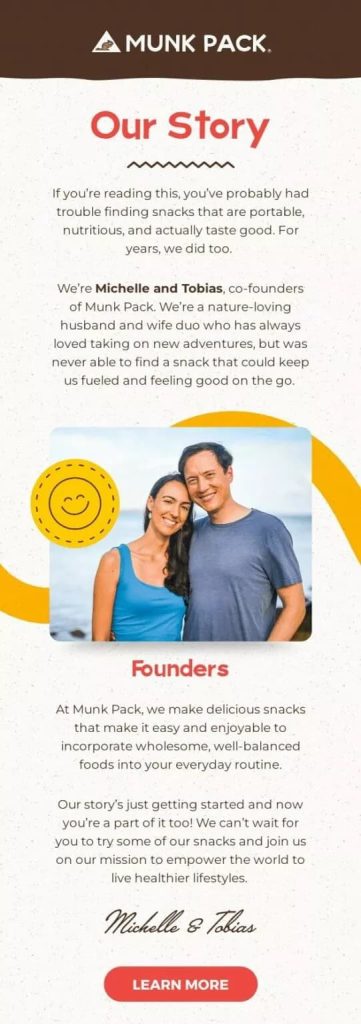
Munk Pack’s welcome email shares how its adventurous founders created the brand to solve the challenge of healthy snacking. A photo and signature add authenticity and a small-brand feel, while the ‘LEARN MORE’ CTA invites subscribers to explore further—appealing directly to health and fitness enthusiasts.
3. Build Trust with Gratitude
Expressing gratitude in your welcome email makes customers feel valued and sets the stage for a positive relationship from day one.
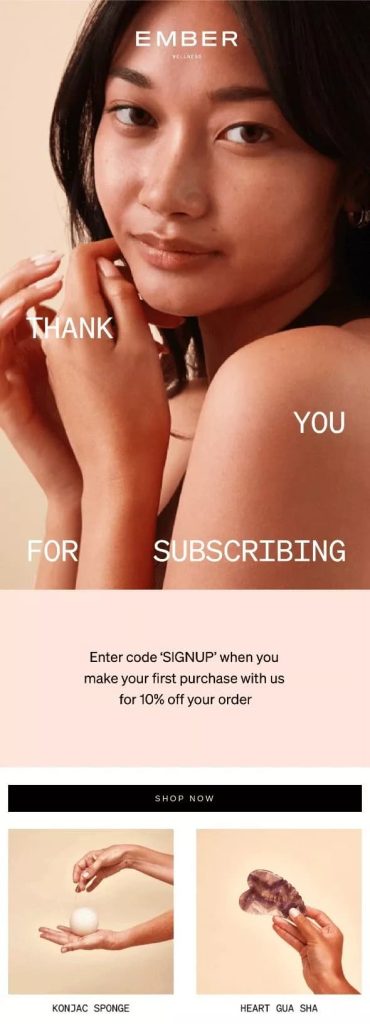
The welcome email offers a 10% first-purchase discount with the code ‘SIGNUP,’ providing a clear incentive for immediate engagement. Ember Wellness pairs this offer with an introduction to products like the Konjac Sponge and Heart Gua Sha—showcasing their range without overwhelming new subscribers.
4. Show off your best-sellers
Vagari Bags
Subject line: Welcome to Vagari Bags
Vagari Bags is a British brand that sells stylish and versatile men’s bags, including laptop bags, travel bags, cross-body bags, backpacks, and more.
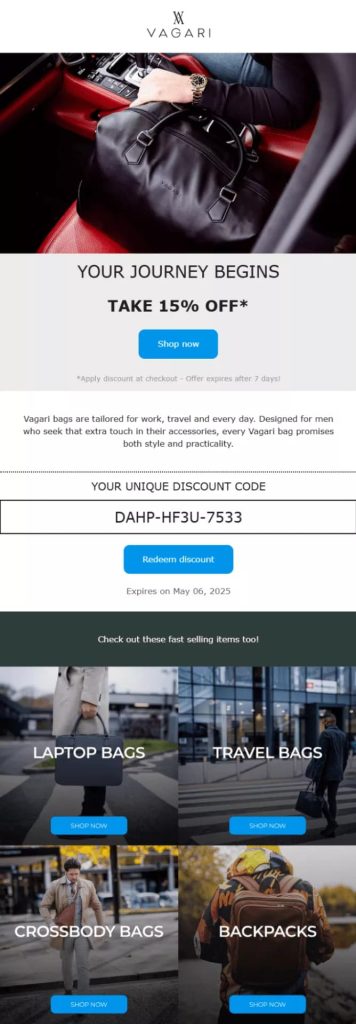
The welcome email showcases best-sellers with eye-catching images, clear ‘SHOP NOW’ buttons, and a friendly ‘TAKE 15% OFF’ offer—highlighting the brand’s value and nudging subscribers toward their first purchase.
5. Share your brand’s story
People are drawn to brands with a compelling story because it fosters a personal connection. Use your welcome email to share your journey, values, or inspiration—helping customers feel more engaged and invested in your brand.
Share your story in your welcome email to create a personal connection and make customers feel invested in your brand.
Island Olive Oil Company
Subject line: Welcome to Island Olive Oil Company!

Island Olive Oil Company’s welcome email combines engaging visuals, a behind-the-scenes video, and a time-limited 10% discount to tell its story and entice subscribers to make their first purchase.
7. Win trust with social proof
Featuring real customer reviews in your welcome email builds credibility, and pairing them with a discount can boost conversions.
Vegamour
Vegamour is a hair wellness brand offering natural, plant-based formulas designed to support healthy hair growth and combat thinning or hair loss.
Subject line: Reminder: your 20% off is waiting for you

Vegamour’s welcome email builds trust with verified buyer reviews, shows real results with a before-and-after image, and makes it easy for new subscribers to find the right products through a quiz and clear ‘SHOP GRO HAIR’ CTA.
Material
Material produces high-quality, functional kitchenware for the modern home cook.
Subject line: 1,000+ 5 star reviews

Material builds trust by showcasing handpicked customer reviews and inviting subscribers to ‘put us to the test’ with perks like free shipping and a lifetime guarantee.
The Bottom Line
Helping customers make decisions is at the heart of effective email marketing. Your welcome flow isn’t just about saying hello—it’s about reducing overwhelm, clarifying options, and guiding subscribers to the product that’s right for them.
When you act as a decision-making partner rather than just another brand shouting offers, you build trust, increase conversions, and lay the foundation for long-term loyalty.
In today’s crowded ecommerce landscape, the brands that win aren’t the ones with the most products—they’re the ones that help customers make the best decisions.




